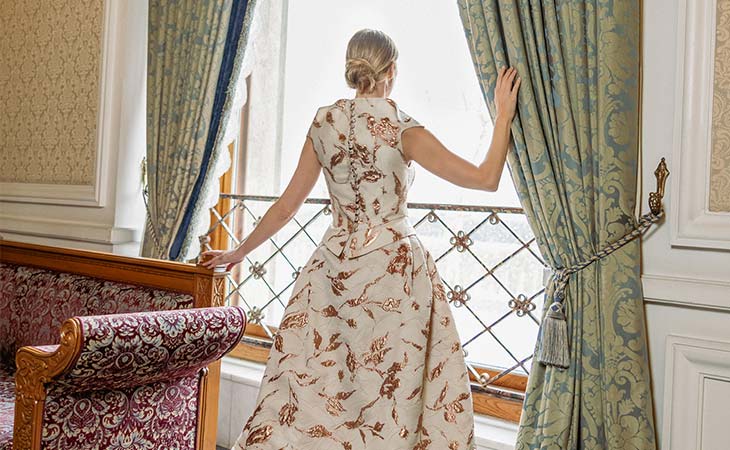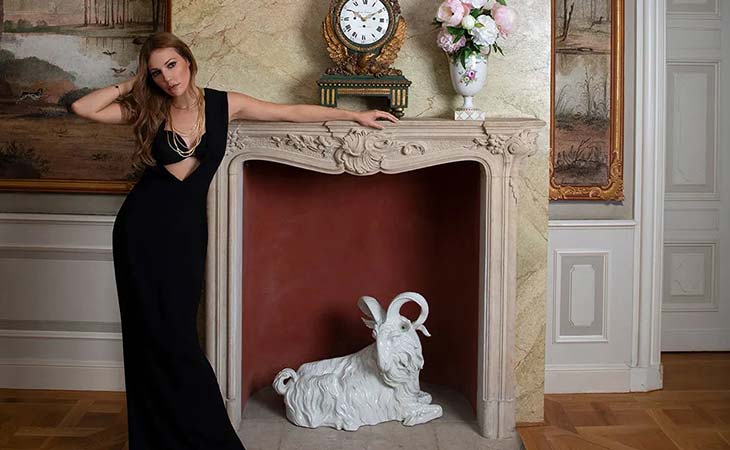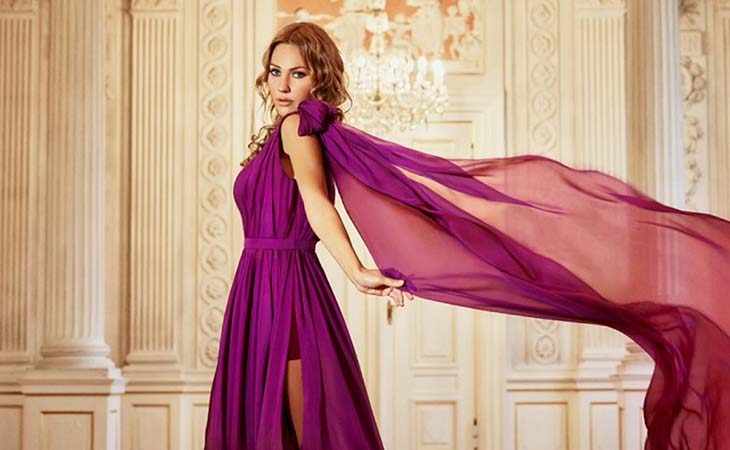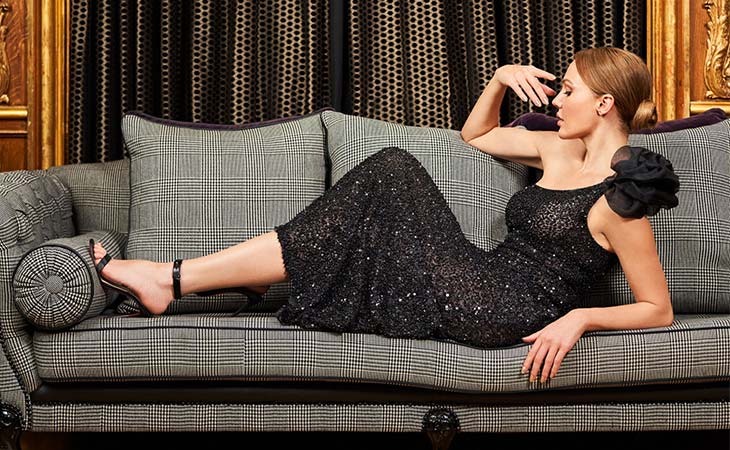Vintage fabrics and traditional sewing techniques are a heritage of European art and culture, now reaching a peak in the world of German couture. These rare fabrics and hand-sewn techniques not only bring a classic and luxurious touch to garments but also tell a story of fashion history and artistry. German designers use brocade, Belgian lace, and lightweight hand-stitched wool to create unique pieces that blend traditional craftsmanship with modern, innovative styles. In this article, we explore vintage fabrics, European traditional sewing techniques, and how they are applied in modern couture to uncover the secret behind the charm of these garments.
Table of Contents
1. Vintage Fabrics in Europe: The Return of Classic Fashion
Vintage fabrics have always held a special value in Europe, combining high quality, artistic design, and rich cultural history. These fabrics are used not only in formal and couture garments but also inspire many modern designers.
Brocade Fabrics
Brocade is a luxurious, thick fabric with raised gold or silver patterns, historically used for royal and grand attire. Due to its lavish appearance and intricate texture, brocade remains popular in European couture, particularly in Germany. Using brocade in evening dresses, tailored jackets, and special skirts creates garments that are both historic and modern.
Belgian and French Lace (European Lace)
European lace and delicate hand-embroidered fabrics have long symbolized artistry and authenticity. Today, these fabrics are widely used in couture, especially for bodices and sleeves. European lace, available in classic or innovative colors, allows designers to create truly unique pieces.
Lightweight Wool and Handwoven Textures
Lightweight wool and traditional European weaves, especially in Germany, are used for tailored jackets, coats, and couture outerwear. These fabrics offer durability, flexibility, and natural beauty, combined with precise European stitching to create luxurious, warm garments for fall and winter.
Linen and Traditional Silk
Linen and traditional silk, valued for their lightness, softness, and breathability, are used in summer and formal wear. European couture designers employ these fabrics in shirts, blouses, and elegant skirts, combining them with precise stitching and decorative details to achieve both classic and modern aesthetics.
Why These Fabrics Are Making a Comeback
- High Quality and Durability: These fabrics last much longer than many modern alternatives.
- Classic and Luxurious Appeal: Perfect for formal events and special occasions.
- Cultural Inspiration: Each fabric tells a story, making garments unique.
- Blend with Modern Styles: They allow designers to incorporate vintage charm into contemporary fashion.
Tips for Choosing Suitable Fabrics for Haute Couture Clothing in Winter
2. Traditional European Sewing Techniques and Their Importance
Traditional European sewing techniques form the foundation of high-quality couture. They showcase the designer’s skill, making garments both beautiful and durable. Using these techniques in modern pieces conveys luxury and historical authenticity.
French Seam
The French seam completely encloses the fabric edges, reinforcing both durability and quality. Ideal for delicate fabrics like silk and lace, it provides a clean and elegant finish.
Classic German Tailoring
German tailoring techniques involve precise construction for jackets, coats, and formal wear. Each seam and adjustment is carefully measured to fit the body perfectly, resulting in garments that are both comfortable and visually flawless.
Hand Embroidery and Decorative Stitching
Hand-stitched embroidery, lace details, and decorative seams add luxury and uniqueness to garments. Typically applied to bodices, sleeves, or skirts, these techniques transform each piece into a wearable work of art.
Importance in German Couture
- Artistic and Historical Value: Garments become works of art, not just clothing.
- Enhanced Durability and Quality: Precise stitching ensures longevity.
- Luxury Feel: Wearing the garment gives a sense of uniqueness and prestige.
- Modern Fusion: These techniques enable the creation of contemporary designs inspired by tradition.
How to Look More Beautiful by Choosing the Right Dress Length?
3. Combining Rare Fabrics with Modern Design
Modern German couture designers often merge vintage fabrics and traditional techniques with contemporary styles:
- Mixing Classic and Modern Colors: Traditional fabrics in rich, natural colors paired with modern hues create a striking effect.
- Selective Use of Rare Fabrics: Incorporating small sections of vintage fabrics adds uniqueness without weighing down the garment.
- Choosing the Right Sewing Technique: The stitching method must match the fabric to preserve durability and aesthetic appeal.
A Journey Through Clothing Styles and Choosing the Right Outfit for Your Personality
4. Real-Life Examples of Classic Fashion Revival in Germany
In recent years, German and European couture brands have revived vintage fabrics and traditional techniques:
- Wool coats with classic German tailoring
- Hand-embroidered lace garments with modern designs
- Luxurious brocade in evening gowns and fashion shows
These combinations create garments that are both artistically valuable and appealingly unique to clients.
Secrets of Looking Good: Choosing the Right Clothes and Accessories for Every Body Type
5. Care Tips for Vintage Fabrics
To maintain the quality and longevity of garments made from vintage fabrics:
- Hand wash with gentle detergents
- Store in a dry place away from direct sunlight
- Iron at low temperatures with a protective cloth
Comprehensive Women’s Fashion and Style Guide
Conclusion
Vintage fabrics and traditional sewing techniques are more than a fashion choice; they bridge the past and present in German couture. These rare European fabrics and hand-stitched methods transform each garment into a unique work of art, conveying both luxury and historical value. Smartly combining vintage fabrics, traditional European stitching, and modern styles ensures every client experiences something exceptional, while each garment tells its own story. The revival of these fabrics and techniques highlights the enduring importance of artistry, quality, and innovation in couture design.
Frequently Asked Questions (FAQ)
- Where can I find vintage fabrics in Germany?
In traditional workshops, local markets, and specialty fabric stores. - Are traditional European sewing techniques difficult?
Yes, they require experience and skill, but the results are highly valuable and unique. - Which vintage fabrics are popular in Europe?
Brocade, Belgian and French lace, lightweight hand-stitched wool, and traditional linen. - How can I combine vintage fabrics with modern designs?
By choosing colors and patterns that align with contemporary styles and using vintage fabrics selectively. - How should garments made from vintage fabrics be cared for?
Hand wash, store in a cool, dry place, and iron at low temperatures.



